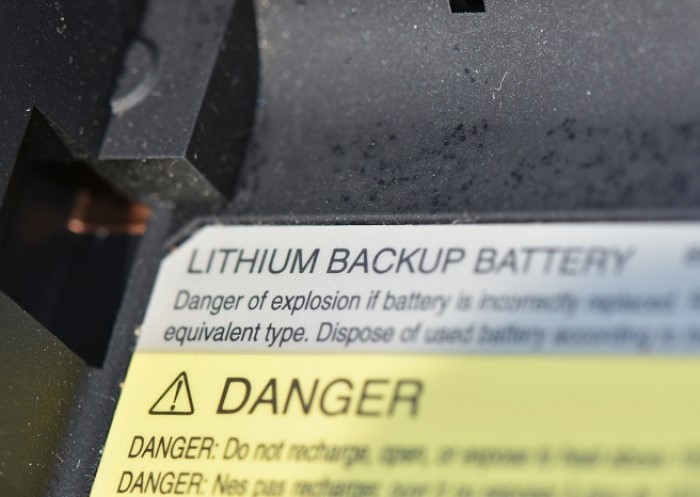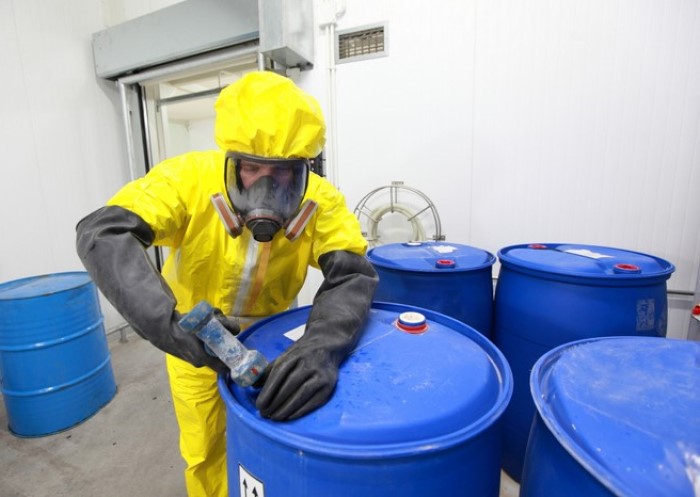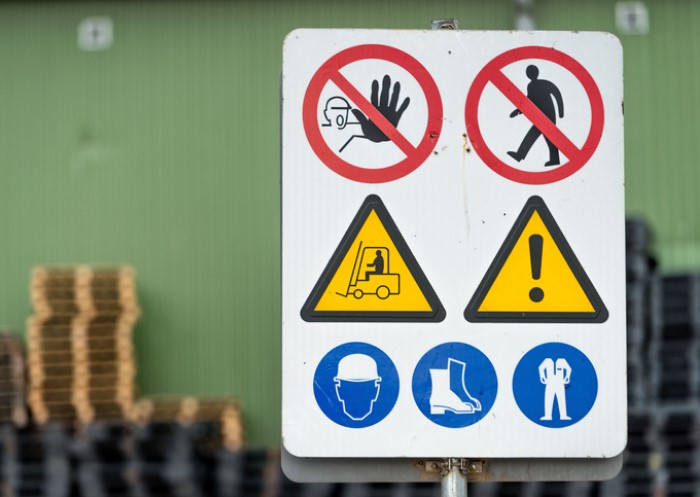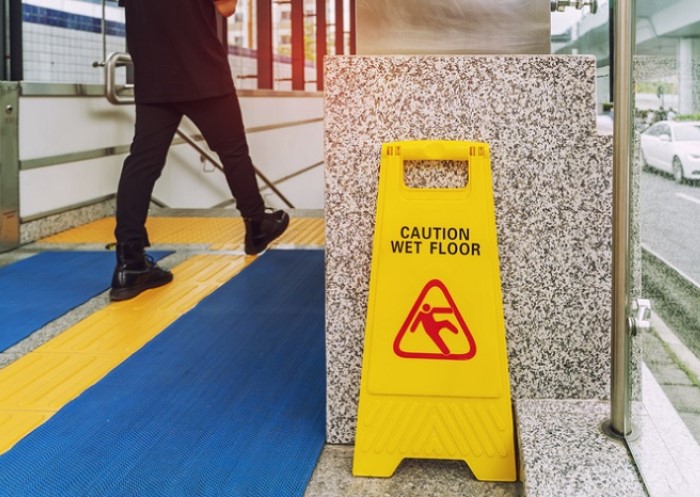Table of contents
Hazardous substances are those that possess a potential chemical hazard. Various laws and regulations must be observed when handling hazardous substances, guiding employers on how they can help their staff to work safely. The guide below provides you with important information on how to stay safe when working with hazardous substances.
Definition of hazardous substances
Hazardous substances include both pure substances (elements and compounds) and mixtures of substances prepared from them. They can be differentiated according to their properties:
- Labelled hazardous substances
- CMR substances indicating carcinogenic, mutagenic and reprotoxic properties
- Substances with a risk of explosion
- Substances produced during the manufacture or use of substances falling under 1, 2 or 3
- Substances which, although not falling under 1 to 3, may pose a risk to the health and safety of workers because of their chemical or toxic properties
- Substances for which an occupational exposure limit value has been defined
Operating instructions for handling these hazardous substances aim to regulate safer workplaces. The storage of radioactive substances is regulated by the Ionising Radiations Regulations 1999 (IRR99).
Systems for handling hazardous materials: The GHS
There are numerous rules and standards for the handling of hazardous substances that fall under Control of Substances Hazardous to Health (COSHH) regulations in the UK. These substances also come under the control of the Globally Harmonised System of Classification and Labelling of Chemicals of the United Nations, better known as the GHS. This aims to unify the systems of individual countries worldwide.
The hazards to human health and safety, as well as to the environment, can be minimised by this global system – both in the transport sector and in the production and use of hazardous substances. The directive aims to provide uniform hazard pictograms as well as risk and safety phrases that classify the danger of any substance. Whereas hazard symbols were previously presented in square form with an orange background, the GHS now presents them in the form of a rhombus outlined in red with a white background.
Further regulations on the handling of hazardous substances
In addition to the GHS, other rules and standards must be observed depending on the specific hazardous substance and area of application, which include:
- The Health and Safety Executive, a government agency responsible for the encouragement, regulation and enforcement of workplace health, safety and welfare, and for research into occupational risks in Great Britain, including hazardous substances.
- The Environment Agency deals with any issues surrounding hazardous substances and possible infiltration of water supplies.
- For development proposals around hazardous installations, local planning authorities should be consulted for technical advice on the risks presented by major accident hazards affecting the surrounding area and the environment. This advice should be sought from the Control of Major Accident Hazards (COMAH) competent authority.
- European standards on constructional requirements and test criteria for hazardous material storage of flammable liquids and pressurised gas cylinders (EN 14470-1 and -2) should also be met.
Employer responsibilities for hazardous substances
When handling hazardous substances in the workplace, employers have a direct responsibility for staff. This includes compliance with legal regulations, ordinances and standards to protect employees’ health and safety.
In principle, the following order applies when dealing with hazardous substances:
- Avoid
- Contain
- Protect
Hazardous substances should therefore be used as little as possible. Relevant work areas should be separated or specially secured. In addition, personal protective equipment (PPE) must be handed out to employees free of charge, if required. Instruction on handling hazardous substances must also be provided.
Employers should also observe the following:
- Substances must be checked as potentially hazardous substances after a risk assessment
- Hazardous substances must be visibly labelled
- The relevant safety data sheets for handling hazardous substances must be accessible to all employees
- Warning signs must be displayed correctly, or safety signs affixed
- Employees must receive regular training and operating instructions for handling hazardous substances must be clearly displayed
- Regular preventive medical check-ups by the company or occupational physicians may be necessary, depending on the hazardous substance
- Proof of expertise may be required for handling hazardous substances
Protective measures for working with hazardous substances

Before safety measures are planned, a risk assessment of the relevant substances should be carried out. This should be repeated at regular intervals. You can obtain information and recommendations on COSHH risk assessments at the Health and Safety Executive website. In order to correctly assess the potential hazards, consult external or internal experts for improved occupational safety.
A risk assessment provides a starting point for possible protective measures. These can be divided into several categories:
- Replacing the hazardous substances with less hazardous alternatives
- Technical protective measures, for example, through closed systems, extraction or ventilation systems
- Organisational protective measures, for example, instruction in the handling of hazardous substances, maintenance plans or limitation of working hours
- Personal protective measures such as breathing masks or protective clothing
- Occupational health and safety specialists or company doctors can also provide support in choosing suitable measures
Storing hazardous substances correctly
Handling hazardous substances also includes the safe storage of hazardous material, which again falls under COSHH regulation. Substances must be stored in such a way that they do not harm health or the environment. Depending on the hazard potential, materials should be stored in safety containers or safety cabinets labelled with an appropriate GHS marking. Storage rooms must also meet special requirements and be equipped with stable, heavy-duty shelving. Regular inspections, complete documentation of these and lists of stored hazardous substances are also required.
FAQ for handling hazardous substances
Three of the most significant pieces of legislation relating to hazardous substances include:
· Control of Substances Hazardous to Health (COSHH)
· Dangerous Substances and Explosive Atmospheres Regulations 2002 (DSEAR)
· Control of Asbestos Regulations 2012
When handling hazardous substances in the workplace, the employer is responsible for the safety and security of staff. This includes compliance with legal regulations and standards to protect their health and safety.
The following order applies when handling hazardous substances:
· Avoid
· Contain
· Protect
Working with hazardous substances also includes safe storage. Information on this can be found in the COSHH guidelines on the HSE website. Substances must be stored in such a way that they do not harm either the health of people or the environment. Depending on the hazard potential, storage should be in closed containers or safety cabinets labelled with an appropriate GHS marking. Storage rooms must also meet special requirements and be equipped with stable shelves. Regular inspections, complete documentation and lists of the stored hazardous substances are also required.
Please note: The regulations mentioned above represent only a selection of the most important legal requirements. Please refer to the listed organisations and directives for more detailed information. If in any doubt, consult experts or contact the relevant regulatory authorities.
Image source:
© gettyimages.de – Courtney Hale















